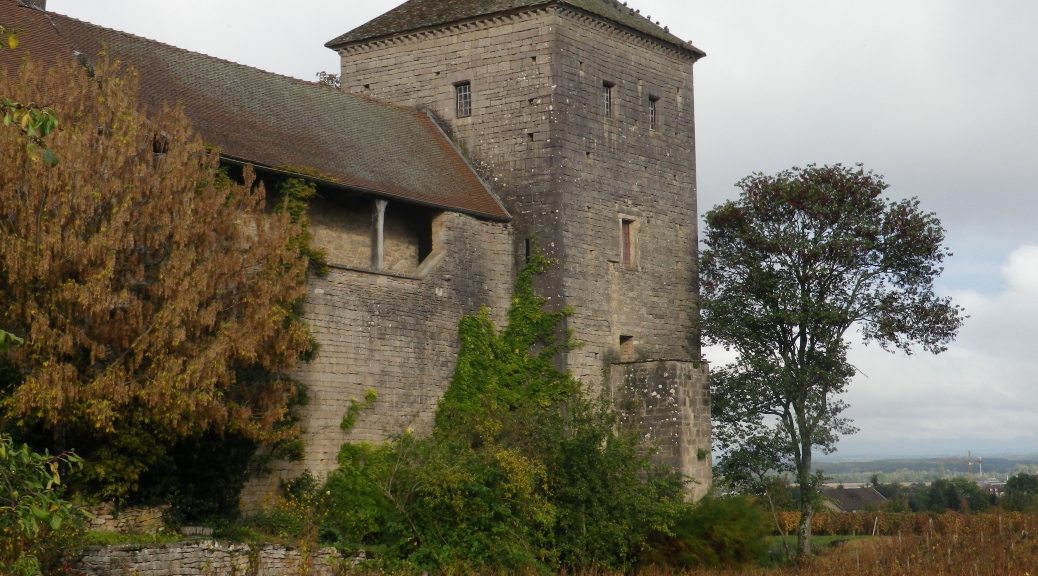Hiking Burgundy’s Cote de Nuits taught me to appreciate the important things in life; and in the Cote de Nuits, life does seem to revolve around wine. Certainly wine is not the most important thing in life here: rather producing the greatest quality wine becomes an all-consuming passion on the part of most families who make a living from these hugely famous but surprisingly small appellations and the wines they produce. And hiking through these vineyards gave me a chance to appreciate that.
The Cote de Nuits vineyards, some of the most famous in the world, begin just yards from trailhead in Chenove, with the Marsannay Village appellation. Shortly after, in the village of Fixey/Fixin, I came to the first Premier Cru vineyard: Les Arvelets. (Fixin is also does homage to another great: Napoleon. Fixin’s Noisot Museum, and associated park, were created by Claude Noisot, a former officer in the Imperial Army who actually accompanied Napoleon into exile at Elba.)
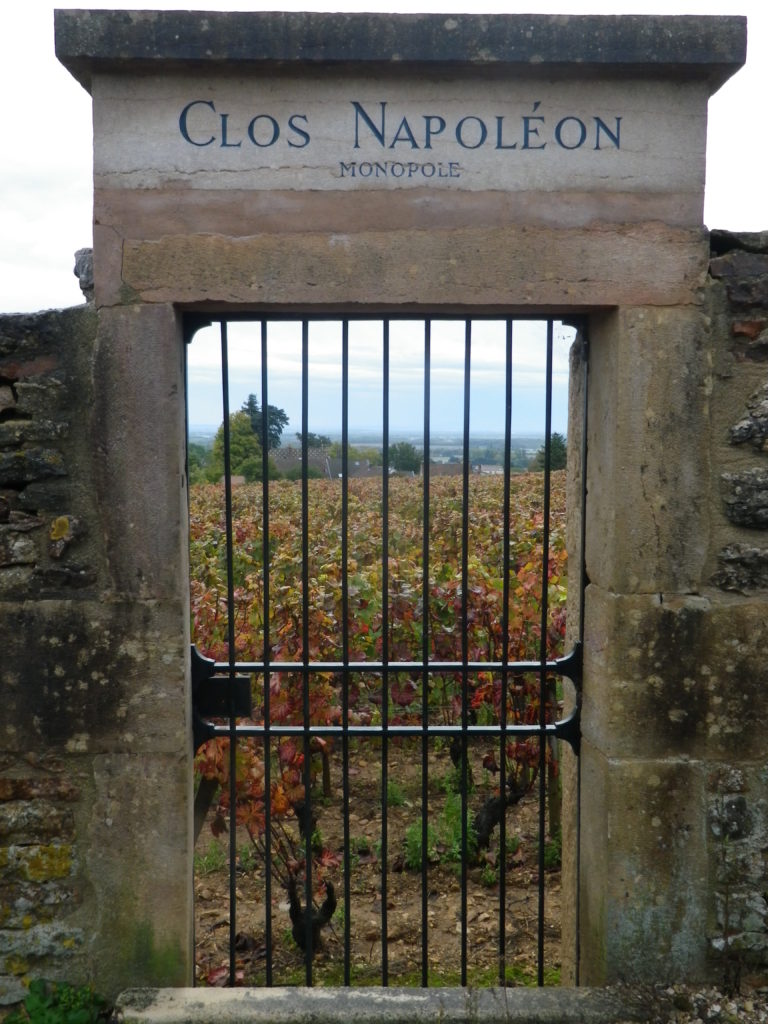
Yet even more glory was to come. After a walk through a stately promenade of Corsican pines (planted by Noisot), and indigenous forest, the trail entered the village of Gevrey-Chambertin, home to the first of several Grands Crus vineyards highlighted on this trail: Les Mazis, Les Ruchottes, and of course, Chambertin. This village is one of the largest along the route. It is a well-maintained, attractive village of blindingly white stone buildings, beginning its recorded history as an early 10th century monastic foundation, cultivating – you guessed it – grapes.
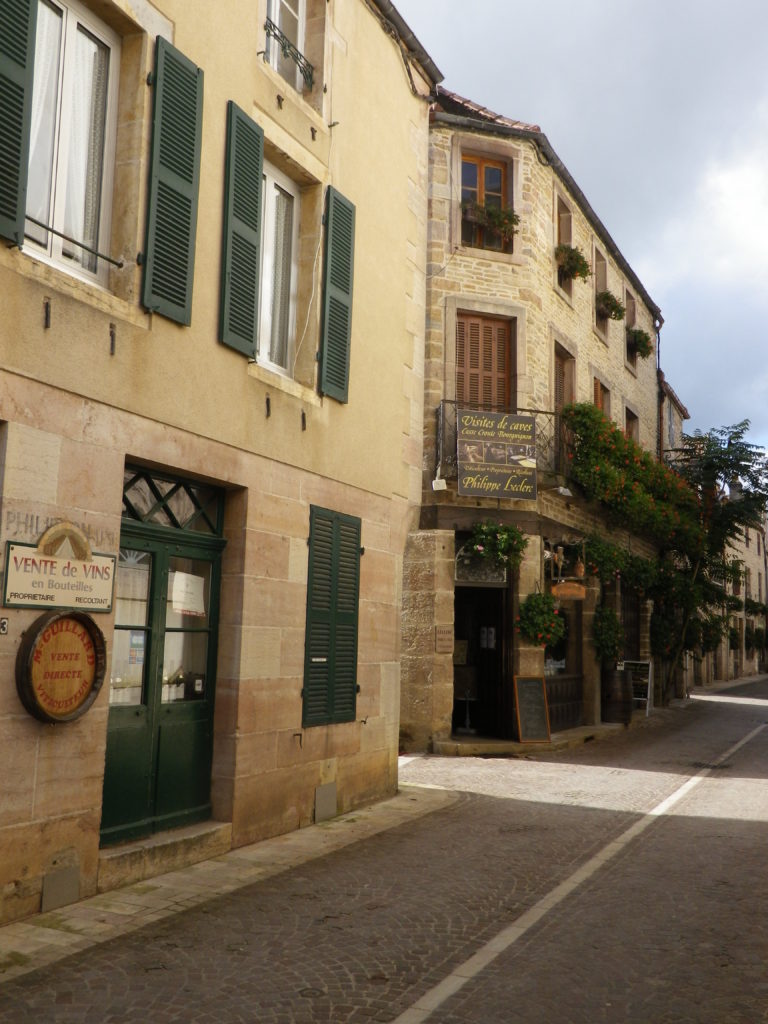
After emerging from the forest south of Gevrey-Chambertin, some serious names began appearing on signs or on walls enclosing the vineyards around small village of Morey-Saint-Denis as the trail lead southward. This is some of the most expensive real estate in France: The 21-acre vineyard Clos de Lambrays was recently purchased by the large Moet Hennessy Louis Vuitton Corporation.
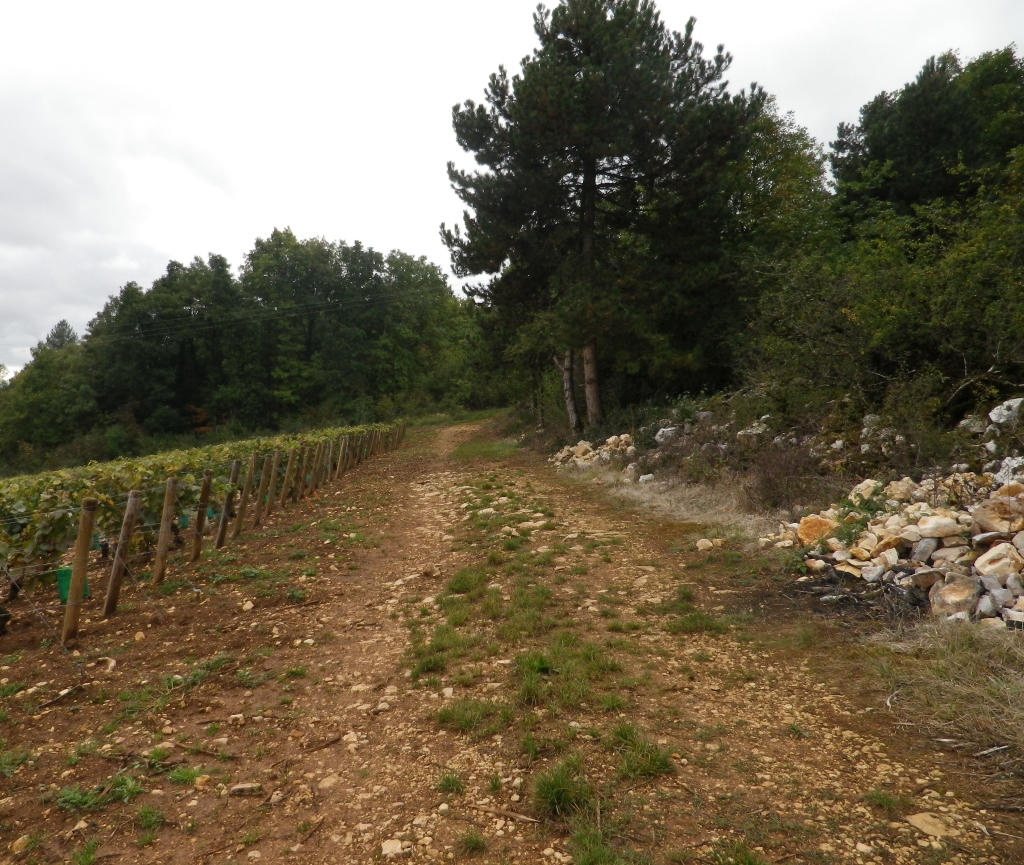
The hike to Chambolle-Musigny went first through woodland, and then wood scrub. This section of the trail ended in a narrow draw, in which the little village nestled – vineyards in front, and low, wooded mountains at its back. It is a peaceful, retiring spot along the otherwise heavily visited Cote de Nuits. Climbing out of the draw through vineyards afforded bird’s-eye views of the village’s vineyards, and an opportunity to photograph the scenic setting.
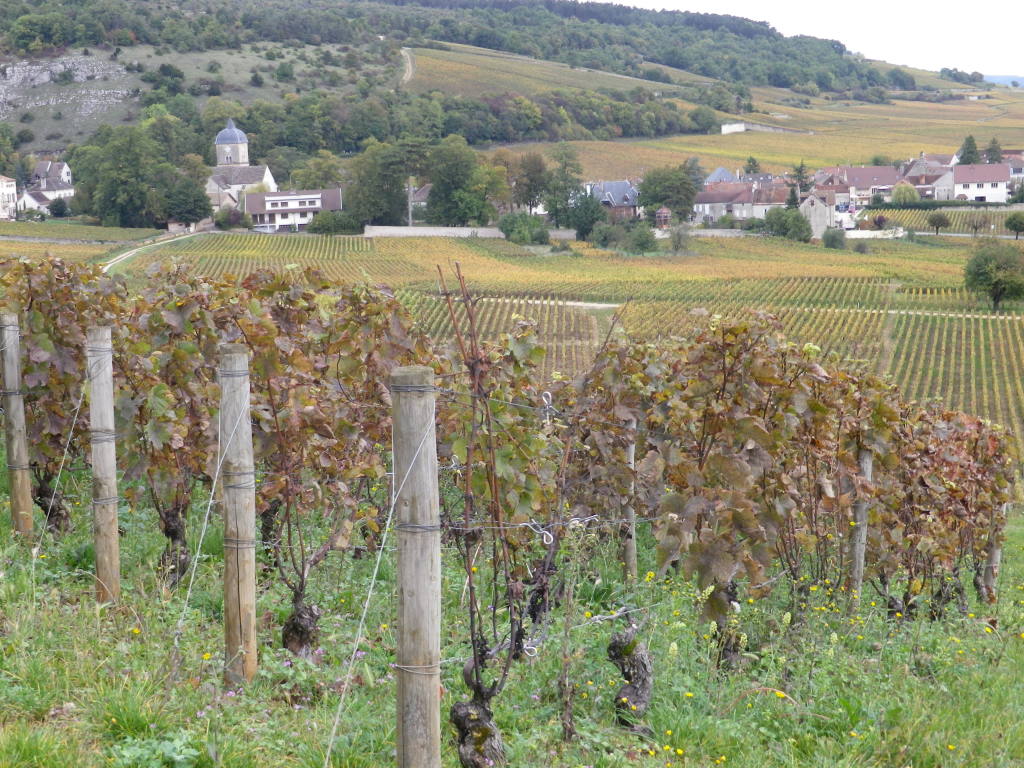
But the highlight of this elevated part of the climb was having the Clos de Vougeot come into view as I rounded a bend in the trail. It set solidly, dramatically, in the midst of its vineyards; the dark, massive roofline sweeping down to the vines, almost obscuring its stone walls from view in places. Its timeless aspect invoked centuries of history and tradition. Another monastic foundation dedicated to viticulture, this is a must-see place when in the Cote de Nuits. Here, in addition to cellars and rooms, there are more ancient presses, crucial to wine-makers in the days of manually-operated equipment.
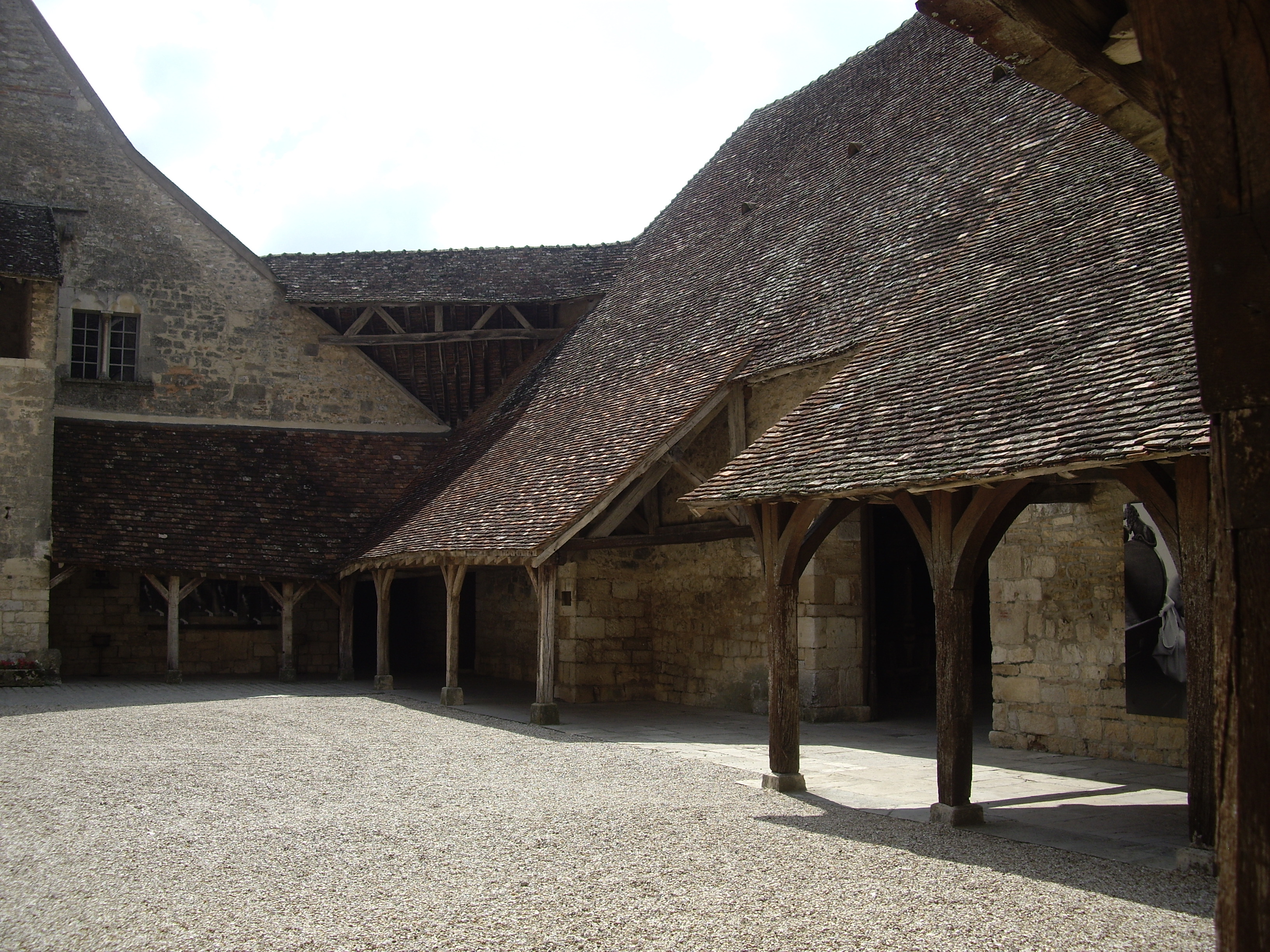
Now heading exclusively through vineyards, and mostly downhill toward Nuits Saint George, Vosne-Romanee lay amidst a sea of famed Grands Crus vineyards: Les Grands Echezeaux, Richebourg, Romanee-Saint Vivant, Romanee-Conti, La Grande Rue, La Tache. Additionally, Vosne-Romanee, and later Nuits Saint George, count several Premiers Crus vineyards among its finest on view along the trail. For lunch, I drank a memorable glass of a Vosne-Romanee Village appellation.
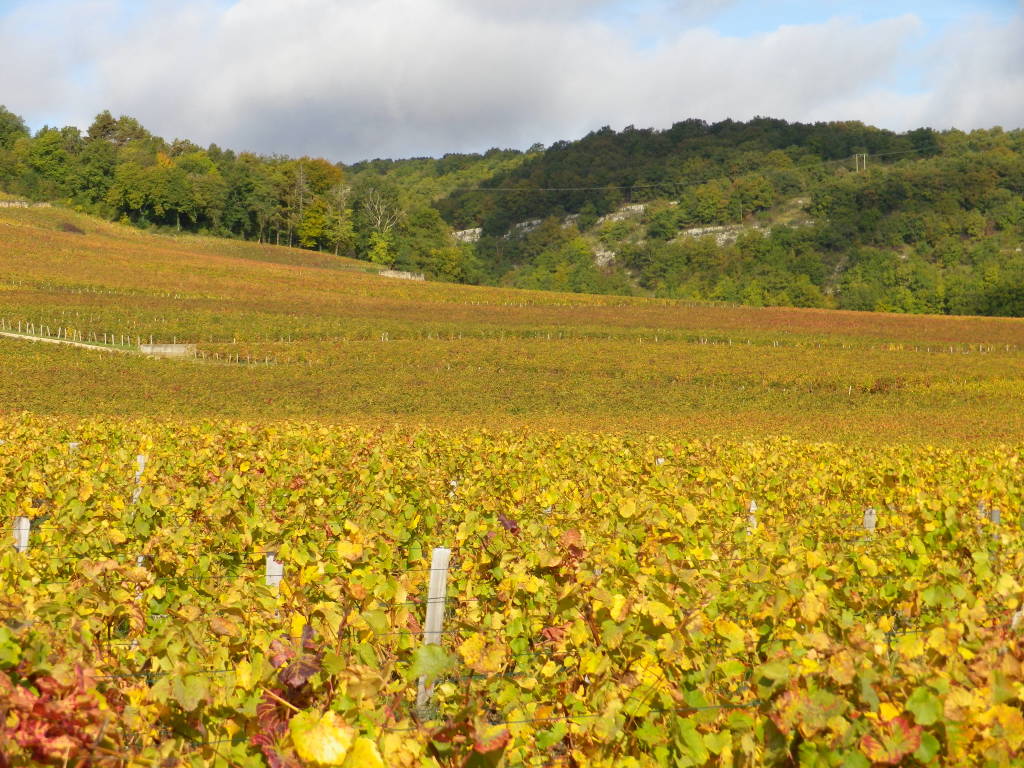
The largest town on the trail, Nuits Saint Georges, required some time to explore. Within its pedestrian area, several restaurants and bars feature very good, yet affordable, local wines. Knowledgeable wine shop personnel offer helpful advice on buying local wines, and are an alternative to the vintners, who will be extremely busy during the end of the harvest.
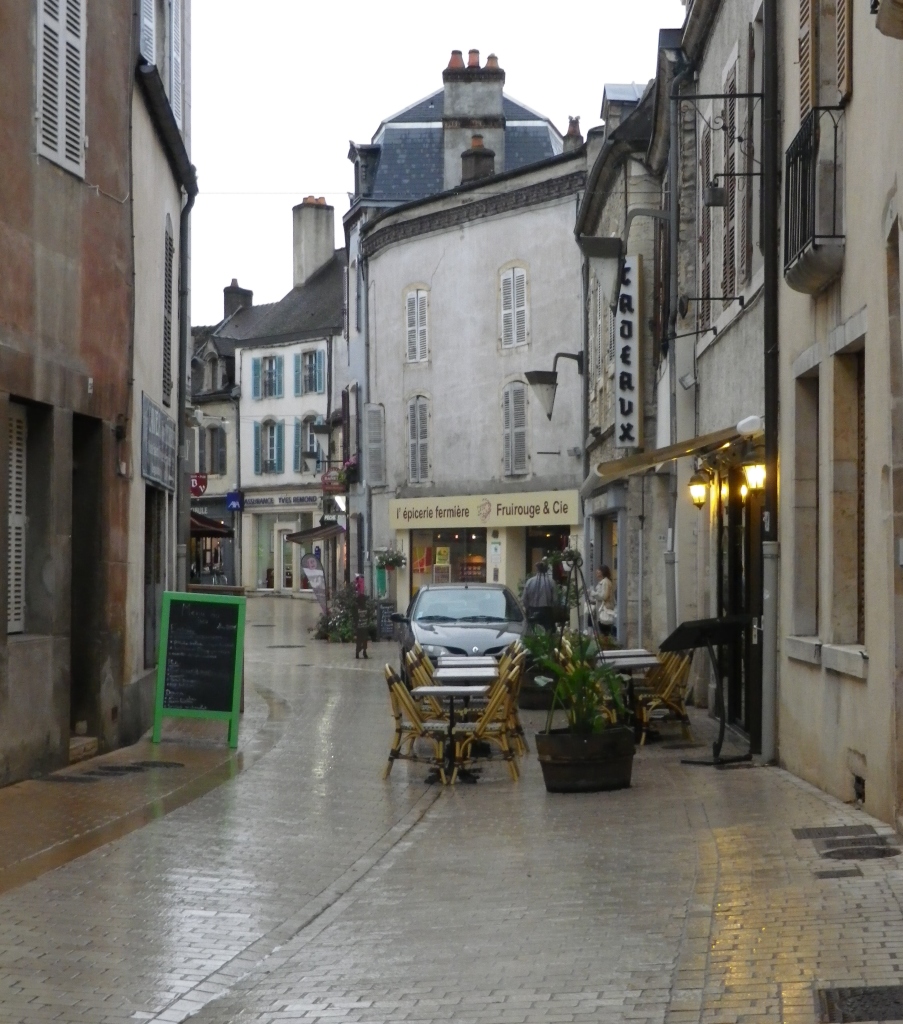
The trail from Nuits Saint George to Villars-la-Faye featured as much forest as vineyard, as the end of the Cote de Nuits appellation neared outside Comblanchien. Here, a long climb into the hills began, ultimately reaching the Hautes-Cotes de Nuits appellation. A seemingly vast expanse of vineyards lay between me and my goal: the village of Villars-la-Faye. Dark clouds threatened to rip open. In one last variation though, the trail wound around, then up, a small, tree-covered mountain, before passing an ancient church and cemetery, and winding down a little-used road into the center of the quiet little village.
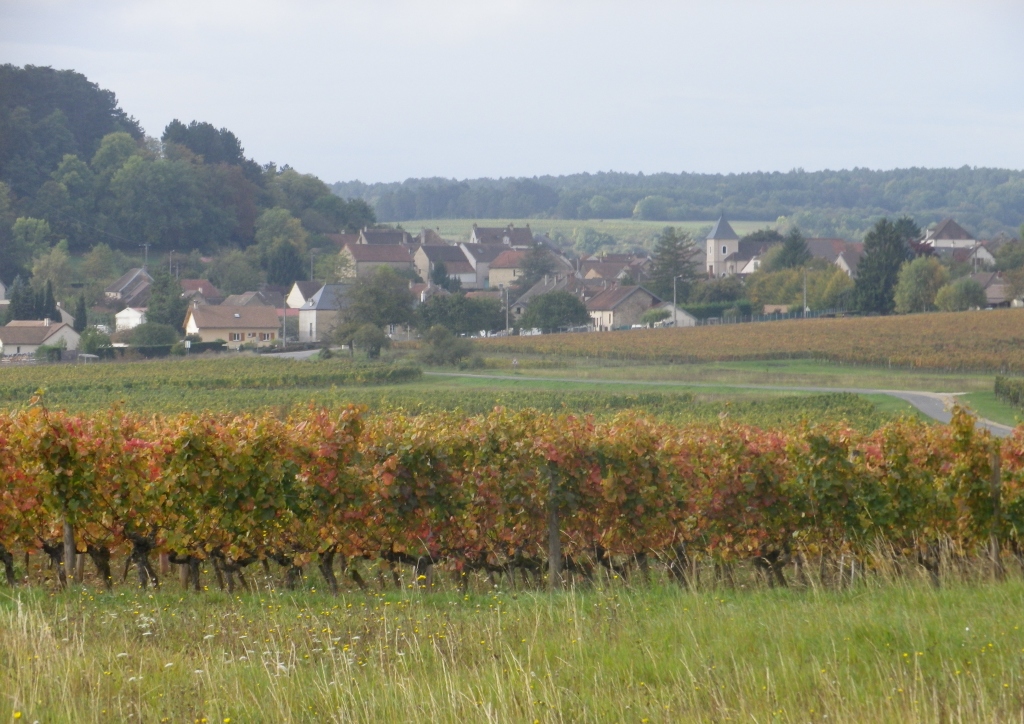
At this rainy point in time, one of my fondest memories along the trail was the glass of Vosne-Romanee Village I drank. On returning to the hotel, the kind innkeeper helped to arrange a visit to the vintner. Fortunately, the daughter of the house agreed to spare some time. Arriving the next day, the air of concentration and urgency was great: the entire family of four would devote the next few days to beginning the process of secondary fermentation, transferring their red wines into oak barrels. Phones and doorbells went unanswered. I really appreciated the time as I realized this was long, arduous work, done with pride by small families with a passionate commitment to tradition and excellence. Wines made in this way are indeed memorable; and like this hike, memorable in more ways than one.
